I’ve been looking for a lighter-weight alternative to my Hammond — something practical to set up and take down at home for practice, as well as to take to jam sessions and the like. And when I say an alternative, I already had my heart set on a Crumar T2 from way back in 1978. I have several Crumar synths, so I have a soft spot for the company; and I have a T1 organ and knew I was satisfied with the drawbars and Hammond-like sound. I just needed the T2 for the the dual manuals (keyboards).
I recently bought this on eBay for $255 purchase plus $185 shipping — at about 100 lbs, I don’t think I was overcharged for shipping. It’s still only a quarter the size and weight of my Hammond, so it’s all good. Like all Crumars, the keyboard is built into the bottom half of a hardcase with a lift-off top and very rugged handles, making transport easy possible.
This is the first of a (hopefully only) three-part set on evaluating what I got and bringing it back up to perfect usable operating condition.
Missing
First, an inventory of what’s not here and what I’m going to do about it:
Stand
The Crumar T-series organs originally came with knock-down stands, which weren’t included with this organ and which I’ll have to fabricate. The lift-off case top has grooved pieces like shelving standards (one removed by me for measurement and experimentation):
The case top gets held on edge and latched onto mating hooks on the vertical rails of the two I-shaped metal legs, thus becoming the horizontal brace spanning across the legs. The organ body then sits on top of the stands and accepts a bolt at each end to lock it into position.
I have some appropriate I-shaped legs from an old printer stand, I’m experimenting with shelving brackets that I can cut up, and my brother is willing to weld for me. I’ll slot the stands and poke the cut-up brackets through to weld a bead on both sides of the rails — I’m not so wildly optimistic as to think that one could weld just the hooks onto the legs.
Pedalboard
The organ would also originally have come with an octave-and-a-half pedalboard, which I don’t have. This would be important for playing serious jazz; but since I’m just a hack and have never had organ lessons, I’m probably saving myself from serious embarrassment by not having the pedalboard.
Swell and Sustain Pedals
Crumar used a custom seven-pin connector (dual in-line four-pin with one pin absent as a key) for their combined swell and sustain pedal assembly, so I can’t use readily-available third-party pedals with 1/4″ plugs.
But as luck would have it, I already bought a Crumar pedal assembly on eBay in beautiful cosmetic condition. The swell pedal doubles as a loading ramp for car trailers, by the way.
Hm, from a glimpse inside, I see that someone has used … shall we say … non-traditional materials to repair or modify the pedal. Looks like I may want to investigate before hooking this up.
Leslie
I don’t have Leslie speakers and the Crumar doesn’t include adequate emulation. Oh, it has vibrato and tremolo knobs, but they lack two critical elements — external controls for on/off and low/high rotor speed, and stereo output for the full swirling effect of a true Leslie.
Happily, I have a couple of Leslie emulators, both of which offer external controls and stereo output. My Korg Toneworks G4 rotary speaker simulator is (or was, during its era) widely regarded as the best Leslie emulator out there, but I find its effect to be a bit much, and the depth of effect is unfortunately not adjustable.
This weekend I also started playing with the rotary emulator on my Line6 POD guitar amp modeler. So far I’m liking it better, and I need to try changing the “A.I.R.” mode from “direct” to “amp” to further reduce the amount of simulated amp coloration the POD introduces (when I’m trying to get a clear tone for Boston — the POD is already just about right for an overdriven Deep Purple sound).
Extra Feature I Don’t Need
The T2 has a bass synthesizer accessible from the lower manual or the pedalboard, with a typical set of subtractive synthesis controls for envelope, VCF, and resonance. I’m pretty unlikely to use this most of the time — although Jeremy and Mindy are interested in jamming some Grace Potter, and unless Mindy learns bass, it could come in handy there on occasion.
First Assessment
Here’s what I knew about the organ’s operational condition going in and what I’ve discovered during a weekend of use:
- The seller acknowledged that several of the volume knobs were crackly. This should be easy enough to fix.
- The master tuning potentiometer was stuck (and out of tune). Yeah, this is a solid-state analog organ and you have to tune it and hope it doesn’t drift while you’re playing.
- Hm, the seller didn’t mention (probably didn’t notice) that D# / Eb doesn’t work anywhere on the upper manual, except the highest one or two when the 2′ or 1′ drawbars are pulled out. This puts a serious crimp on a lot of things I want to play. Maybe a set of dirty contacts on one of the tone generator boards, or maybe a bad IC.
- Several keys near the center of the upper manual seem to have crackly, intermittent connections. I don’t notice this when running the organ directly to my small Alesis powered speakers, but only when running through the POD with overdrive cranked up. It could be a POD problem (technological or operator), but it only seems to happen on a few specific keys. Let’s see how bad it looks to clean the key contacts and then see what happens.
- Finally, I hear a lot of static when playing through the POD with overdrive. As a sanity check, I ran the POD with the same settings but no input and it was dead quiet, so I think it’s the organ. Maybe a newer generation of low-noise op-amps would help it out.
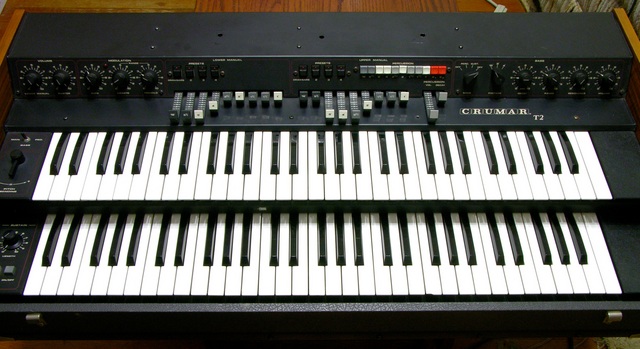
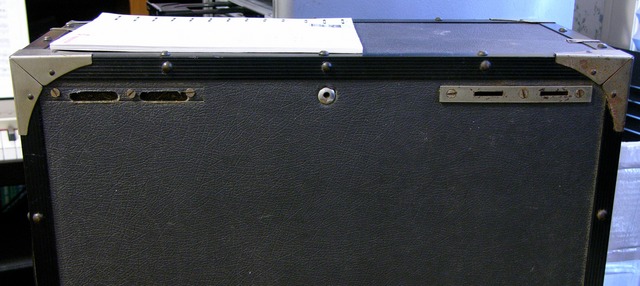
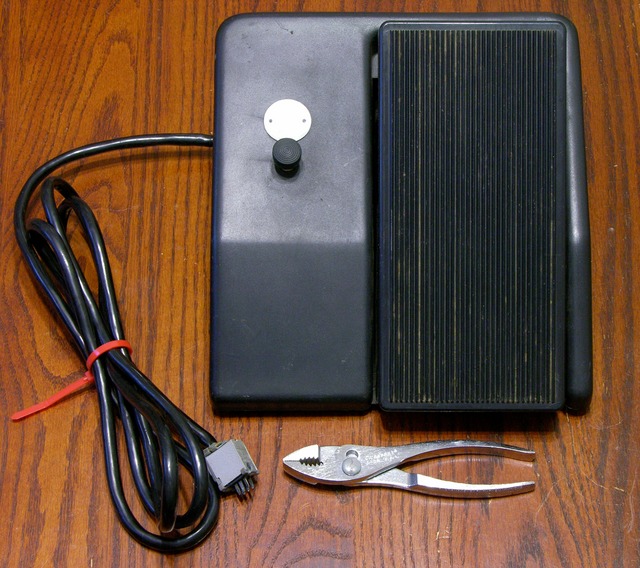
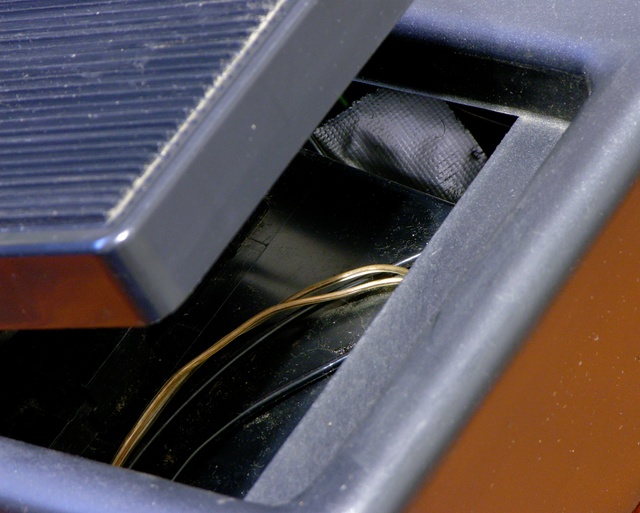
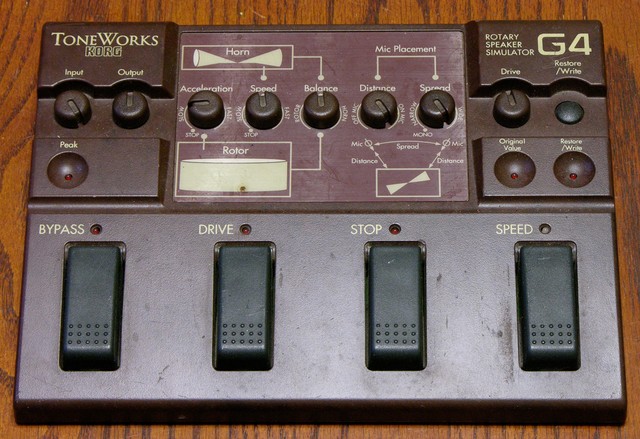
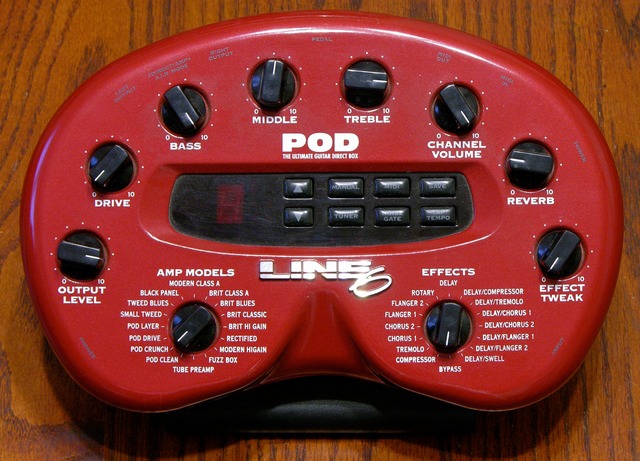
Hmmm.
Sound like you have a few problems to sort out with the T2
The keycontacts are the usual mini spring type that have a habit of
working themselves out of the plastic carrier on the end of the key.
Check the condition of the PCB under the keycontact springs, this PCB is the old organic brown color and has a habit of warping after many years.
The key switching is by the 4001/4002 ICs these are still widely available
Garry
After more investigation I cannot find a schematic for Crumar T2
But I do have the schematic for the Crumar T1 and I feel certain that the gating PCB will use the same components as the T2. I think you will just have 2 off these gating PCBs vs. the 1 off. in the T1. Check out the 61 off. 1uf/35volt tantalum capacitors on each agting PCB. these have a bad habit of going short you might even see
some blackened ones like I had in my T1. They have a habit of going short and smoking when the mains power is switched on. My advice is to definitely replace the lot, theyr’e only about 10p each. You’ll have 122 to replace for a 2 manual 61 key. But its an easy job. Also check each of the 470 ohm resistors and the IN4148 glass diodes on the same gating PCBs. Also replace the electrolytic capacitors in the mains pSU (2200 uf/35v)
After that I suspect all should be fine assuming all key contacts are OK
The keycontact PCB is made from the old CEM material and has a habit of warping out of position. If you find this you can use some silicon rubber glue to bond the PCB back to its correct position.
Let me know how you get on.
As as a fellow Crumarite I’d be glad to advise
Im a qualified electronics engineer and part time Muso
G
Garry K, I actually found some T2 schematics online and purchased PDF copies. I have another couple of posts in the works that I haven’t had time to finish writing yet. The problem with the Eb turned out to be a bad frequency divider chip, which I’ve borrowed from my T1 and it’s working fine now. But I’m giving away the punch line to my next post …
Hello guys,
I also purchased a Crumar Organizer T2 but next to my home in France. I’ve paid less than 100$ for this organ plus a leslie 760N (European model). There is a lot of work to do on both organ & amp.
Keith, where did you get the schematics? I would be very interested!
I hope you’ll be able to repair your organ because it’s one of the best hammond clone I ever heard!
Listen to the sound :http://www.youtube.com/watch?v=n__iEJkr3Po (not me of course)
A crumar T1 & T2 Demonstration : http://www.keyboardmuseum.com/soundsheet/crumar_t1t2.html
See my Crumar & Leslie (+ Leslie Combo Pre-amp II) : http://picasaweb.google.fr/thomas.gourdin/Crumar#
Thanks,
Thomas
Thomas, your T2 came with the stand, the pedalboard, and the expression pedal! I’m so jealous!
About the schematics — I don’t remember off the top of my head, but I have it jotted down in notes to write up another post one of these days. Hold on for a bit and I’ll find it for you.
Yes, and the stand was in an original Crumar bag. All crumar stuffs + the leslie for less than 100$ in 2000. I was so lucky… And so happy!!!
When I bought them, none was functionnal. Since my bought the upper keyboard now works and the leslie is under reconstruction.
If you could find the schematics Keyth, I will be the happiest man on earth!
Thank you!
Thomas
Thomas, did you meanwhile get the Crumar organizer diagrams? if not yet – they are available at http://www.wdgreenhill.com/manu/crumar.htm.
Also many vintage parts are on stock in UK.
I recently bought a Crumar Organizer 2 and now I am looking for a T2 as well. I ordered the schematics for my Crumar at Greenhill for about 15 Euro.
Hey…what are the differences between the organizer 2 and the T2?
I know that T2 has a 5 octave lower manual and a bass – sinth section, while the organizer 2 has 4 piano sounds and a rythm section..but soundwise?
Tnx
GURU1979, I’m not familiar with the Organizer, sorry!
Important differences between Organizer 2 (also has been sold as Haven 61) and T2 are as follows.
With T2 you get much better hard rock sound while the sound of the 2 is much softer and seems to be made for dancing music in the 70ies.
The Organizer 2 has been developed earlier (I guess 1975). Each key has still individual mechanical contacts per drawbar that means 9 contacts per key for the UM and 6 per key for the LM. Resulting from this you get the interessing key click sound effect of the classic Hammonds. Especially if the keys are pressed slowly you hear the typical Hammond effect that the pitches of the selected drawbars do not start at the same moment. And this effect is different for each individual key. I like my Organizer 2 especially because of this “non-perfect” vintage sound effect.
With T2 technical development (1978) has removed multi mechanical contacts.
Hi folks,
today i got my Crumar T2, wonderful organ from what i heared till now. I shot it at ebay for (be sure to sit comfortably) only 30€ !!! but without bass pedal of course. Unfortunately some Keys (the Cs and Fs) dont work, so i´ll have to repair it. (hardly surprising with an age of over 30 years). So i`m in a despaired need for the schematic. So please, can anybody help me to restaurate this wonderful instrument by sending me the stuff? i´ll keep you updated…
Thanks alot,
peamet
peamet@web.de
Hi peamet
I have also recently bought a cheap Crumar T2 and also need the schematics. Did you not see the link in the earlier post (www.wdgreenhill.com)? I just send them an email and will let you know how I get on.
I see you’re in Germany, I am too (although i’m actually English). Do you know of any repair techs in the NRW region? My T2 has died on me, I would really like to get it repaired and I have no experience of (or knowledge about) repairing organs. If it doesn’t sound too difficult i’ll give it a try but I would need some advice on what to replace, do you know anything about repairs?
anybody know where to find a replacement key (A) for a Crumar T1?
I HAAVE A T1, A T2, AND A T3. I LOST THE T3 IN A HURRICANE. THE STUDIO WAS DESTROYED BY TREES FALLING ON IT. I HAVE THE T2 WITH A 147 LESLIE. IT NOT ONLY SOUNDS AS GOOD AS MY OLD B3, IT IS A LOT EASIER TO MIOVE. HOEVER I AM LOOKING FOR BASS PEDALS FOR THIS INSTRUMENT. I PLAY A LOT OF GOSPEL CONCERTS AND ALSO RECORDING. IF SOMEONE OUT THERE HAS THESE PEDALS, OR SOME THAT WOULD FIT, PLEASE EMAIL ME AT CRYERF@BELLSOUTH.NET
Hi, thanks for all this great info you’ve posted! I have a t2, and was wondering how the tuning knob at the back works? Does it allow for individual tuning of each note like a piano? I want to tune it using just intonation if possible. Any help you could offer would be appreciated
A little late to the party I guess, but here goes… I used a Crumar T2 back in the late 70s/early 80s. It did sound really good (run through a leslie combo preamp and a model 45 leslie) but it did suffer from the same problem soundwise as the early korg clonewheels – since it did not have the foldback like a real hammond, it could get a little brittle sounding in the high end. A note for anyone wanting to gig with one of these: I bought my T2 brand new and gigged regularly with it. Even before the warranty ran out I started having problems with it sometimes not turning on or randomly shutting off in the middle of a gig. I found that if I slapped it REALLY HARD on the bottom it often (but not always) turned back on. My dealer could not figure out what the problem was. After consulting with Crumar, they replaced “everything that could possibly cause the problem” (twice! under warranty, wouldn’t touch it after the warranty ran out) but to no avail. I finally bit the bullet and got a B2/122 and traded in the T2 on a synth. I heard later that the main circuit board in the T2 was not supported very well, and if you moved it a lot (like I did) the board could flex and cause circuit tracings to crack resulting in intermittent open circuits that are VERY hard to track down. Not sure if this is true or not, just thought you all would like to know.